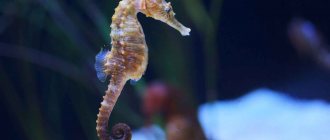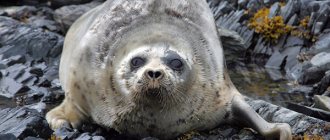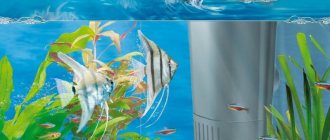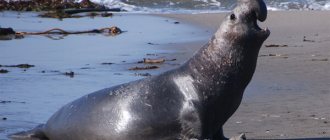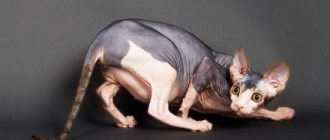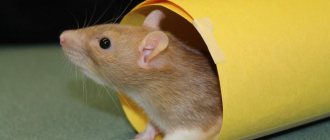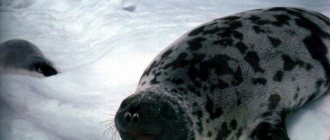- Home
- IIAquarium fish
- II Planning a marine aquarium from II
—financial budget; — selection of sea fish; —choice of corals; — selection of marine invertebrates; — selection of technical equipment; —choosing a location for the aquarium; — selection of equipment; —selection of soil; — selection of stones for IBS, LC, etc.; —launching a marine aquarium, options for “revitalization”; - how does the aquarium mature? — introducing animals into the aquarium, how to do it correctly;
Preface. No matter which way you go when starting a marine hobby, I simply insist that first of all you think about the finances that you are ready and able to spend on an aquarium, then about those who you will keep in it, and only then about the shape, size of the aquarium and the rest . Even if you start by buying an aquarium of a certain size, you CANNOT skip the stage of studying fish and corals!
I strongly advise against purchasing your first marine aquarium at Euphoria. Very often, a novice aquarist wants to get results in one day, which ultimately leads to the death of the purchased fish and other animals. We are not like that, it is important for us to achieve an excellent result with our “sea”.
Making a plan is the most logical start to a successful and long-lasting hobby! As I already wrote, I will put finances first. Without fooling yourself, decide how much you are willing to spend on a saltwater aquarium. A hobby should be a joy for the family, not a burden.
At the next stage, you will have to immerse yourself in the study of fish, corals and invertebrates living in sea water. Why is this important in the beginning? Yes, because a house is not built for a house, but for the one who will live in it. Fish and corals and other animals have their own requirements for the environment, and if they are not respected, the hobby can only bring trouble. I don't think anyone enjoys watching animals suffer. When we have decided on the inhabitants, we select the size of the aquarium, its location in the house, equipment for it and related consumables.
More details about all stages.
Where to begin
Decide on flora and fauna and design style. The choice will determine the volume of the vessel, the soil and the composition of additional equipment. In an aquarium of 200 liters or more it is easier to maintain biological balance.
For beginners, stores offer ready-made kits containing everything you need for a marine aquarium.
If you don’t want to do it yourself, order sizes and designs. Specialists will install it. Further services can also be ordered.
Types of reservoirs
To set up a marine aquarium, you need to clearly decide on its type. There are 5 options, which depend on financial capabilities, available space and personal preferences.
Types of salt water bodies:
- Fish. This option is suitable for beginner aquarists, since to create it you only need to buy the desired species of fish and add them to an empty aquarium. This cheap method involves the use of predatory sea creatures that do not require additional decorative decorations.
- Mixed. This type is one of the most popular. It harmoniously combines not only fish, but also some types of invertebrates. The disadvantages of such an aquarium are the complexity of maintenance and the presence of specific knowledge.
- Coral. It is based on the cultivation of corals and a small number of fish species that are harmless to them.
- Reef. This is the most expensive type of aquarium. In it, professionals try to recreate the reef ecosystem and bring it as close as possible to natural conditions.
- Shark's. Such a reservoir requires not only significant financial costs, but also the availability of large areas.
Aquarium
A variety of shapes are used to design a room.
- Corner saves space. Common in offices and public places.
- Wall-mounted ones are limited in volume. But they fit into any environment. Inconvenient for maintenance.
- Panoramic with convex front glass. With fantastic views and value. With magnifying effect. Non-branded ones suffer from leaks and require labor-intensive repairs.
A classic aquarium (rectangular parallelepiped) is equally suitable for viewing and cultivating marine aquatic organisms. Proportions (WxHxD) - 1 x 0.75 x 0.5.
Materials with different properties are used for walls.
- Silicate glass. Traditional hard and brittle material. Used in standard products. Chemically resistant, difficult to scratch. In some cases, they use non-splintering “triplex”: laminated glass with film.
- Acrylic (organic) glass for custom products. Easily bends and takes any shape. Impact resistant. Easily scratched and becomes cloudy over time. All other things being equal, it is lighter than silicate.
Location
Natural light, especially sunlight, will cause unwanted algae to grow on glass and decorative elements. The interior does not look impressive.
Closely located heating devices overheat the aquarium. It is fraught with the death of expensive inhabitants.
Drafts cause unacceptable temperature fluctuations in the absence of an effective heater.
In noisy and restless places, living inhabitants develop stress.
Volume
From 200 liters to maintain biobalance and keep a larger number of species.
Stand
The stand is needed for reliable installation of the aquarium and compact placement of equipment. Household furniture is not suitable for a load of 300 kg.
For a purchased aquarium, a ready-made cabinet is usually selected. For non-standard sizes - order or make them yourself.
The welded steel supporting hull suffers from aggressive sea water. Craftsmen recommend a wooden frame or an assembly of 22–25 mm MDF (chipboard) without a frame. All parts are protected from water.
Height - 0.8–0.85 m, deflection or swelling of the tabletop is not allowed. Adjustable feet are required to compensate for uneven floors.
Selection of inhabitants and vegetation
Almost all viviparous fish are suitable for beginner aquarists: mollies, swordtails, platies and guppies. They are beautiful, elegant, easy to maintain and hardy. Keeping and breeding these species will allow you to master the basics of aquarium keeping with minimal financial and time investment.
Also, the characin family can be considered for the role of the first aquarium fish. They are hardy and peaceful, and a school of nimble, shiny fish is very interesting to watch.
Small cyprinids are also an excellent option for the first aquarium inhabitants. They are peaceful, hardy and gregarious. Zebrafish, cherry barbs and fire barbs are excellent candidates. Sumatran barbs are also very good, but they are often pugnacious, posing a danger to clumsy, good-natured fish.
If you want to immediately start with something serious and large, you can get some South American cichlases, for example, black stripe, Eliot or astronotus. They are smart and hardy, but require very large volumes - from 50 to 100 liters per individual, as well as good equipment with high-quality filtration and aeration. In addition, most cichlids are quite quarrelsome, and keeping them with other species is very problematic.
You can add several small catfish to the peace-loving fish. They have different colors, body shapes and behavior. Catfish will ensure the cleanliness of the aquarium by eating leftover food, and small sucker catfish are able to clean organic fouling from the walls.
From the bottom inexpensive plants you can use elodea, vallisneria, cryptocoryne, from the surface - richia, duckweed and hornwort. You can also add lumps of moss - cladophora or Java moss.
Thorn fish.
Population
Caring for a saltwater aquarium will be easier if there are living filters - corals, mollusks.
Popular fish
- Fire angel (Centropyge loricula), fire centropyge. The color is yellow or orange with black vertical stripes. Anal and dorsal fins with bright blue edges. Grows up to 9–11 cm. They are aggressive towards male relatives. It is recommended to keep at least 500 liters of male and 2-3 females in one vessel. Omnivores, most of the diet is plant foods. Filtration through activated carbon.
- Blue surgeon (Paracanthurus hepatus), royal surgeon. Color blue with dark blue pattern. The caudal fin is yellow with a dark edging. Grows up to 9–12 cm. Peaceful, capacity from 300 liters, loves shelter. Omnivorous, the main food is plants.
- Yellow zebrasoma (Zebrasoma flavescens), yellow surgeon, yellow zebrasoma. The color is bright yellow. Grows up to 9–11 cm. Easy-living, capacity from 250 liters with shelters. The flock is wary of new relatives. Eats plant food 3 times a day. As feeding - live and frozen food, boiled egg yolk and chopped fillet of sea fish, shrimp and mussels.
- Clownfish (Amphiprion), amphiprion. The orange amphiprion (Amphiprion percula) is common in aquariums. The color is orange with white vertical rings. Length - 6–9 cm. In the wild they live in symbiosis with predatory sea anemones. Peaceful, in a common aquarium up to 70 liters per couple. They love shelters. They actively reproduce, the male guards the eggs. They are omnivores and eat live or frozen food with herbal supplements 2–3 times a day. Noisy: purring, clicking.
- The Royal Gramma (Gramma Loreto) is an Atlantic fish of the order Perciformes. The color is purple, yellow in the tail. 5–6 cm in length. They are territorial and aggressive when there is not enough space. For a couple of fish in a species aquarium you need from 150 liters. They are omnivores, eat live and frozen food with plant nutrition.
Plants
The pinnate leaf caulerpa (Caulerpa taxifolia) is distributed in the wild in the Indian and Pacific oceans and seas of the basin. A creeping plant with feather-like foliage from the stem. Stems up to 15 cm. No maintenance required in a well-established aquarium. Lighting 50-60 lumens per liter.
Leafy caulerpa (Caulerpa prolifera) is native to the Indian and Pacific oceans and basin seas. Creeping stem with pointed leaves 16–18 cm long. Unpretentious, preferably medium flow. Lighting 50-60 lumens per liter.
Selection of fish
Among the variety of sea fish, not every beginner will be able to figure it out. Let's look at the most popular options:
Clowns
The famous clown slave is the ideal inhabitant of a marine aquarium. You can buy a couple of copies of this type.
Don't buy Clarkie the Clown or Tomato Amphitryon as they grow quite large and aggressive.
The clown fish, well known to us thanks to the cartoon, is quite simple to keep in an aquarium.
Dogs
This type can be divided into two groups - useful and beautiful. Useful dogs - clean the sandy bottom. You can take one dog of one subspecies, one of another. For beauty, a bicolor dog is suitable, and for utility, an algae-eating dog.
The blenny fish is a beautiful bottom dweller of the home sea.
All dogs are jumping, so when placing it in an aquarium, try to lower it to the very bottom.
Wrasse
Keeping sea wrasse fish in an aquarium is quite problematic, as they grow quite large. But there are specimens that are both small and beneficial to the reef, such as the doctor wrasse, yellow tamarin or six-banded pajama wrasse.
The yellow tamarin wrasse makes a great pet.
Territorial
90% of aquariums contain territorial fish. Aquarists prefer chrysipterus, black dascillo-domina and others. These species are incredibly hardy and relatively inexpensive. But keep in mind that territorial fish often create problems in small aquariums.
Black Dascillo-domina (left) and Chrysaptera (right). The most popular and livable inhabitants of home mini-seas.
Pack
For a small marine aquarium, only chromis are suitable for schooling fish. They are mobile, small in size and have a bright color. A flock requires 4 copies.
A flock of chromis is a real find for aquarists.
Exotic
If you want to observe exotic species of fish in your aquarium, then you can select several representatives of different species that can live freely in your reef. Ladybug fish, boxfish, lionfish, moray eels and others can ideally complement the marine world, the main thing is to follow the rules of a non-aggressive neighborhood.
What about such a pet? Moray will definitely add some zest to your life.
Equipment
Marine aquarium keeping requires stable conditions in the jar. When a significant amount of water evaporates, the salinity increases. Get an auto-topping system: buy it or make it yourself. Only osmotic water is suitable for topping up.
Electrical equipment and switching located in the cabinet and nearby must have a degree of protection of at least IP65. Sea water is a conductor.
Filtration
Necessary for mechanical purification of water from solid particles. Filter through foam rubber, padding polyester.
But the main thing is bio- and chemical filtration to remove substances harmful to the inhabitants. Ammonia is converted by bacteria into nitrites and nitrates. Bacteria live on bioceramics, plastic balls with a rough surface and on porous glass balls.
Chemical cleaning is carried out using activated carbon.
For cans over 150 liters, canister (external) filters are effective. A pump is used to pump water.
Select productivity at the rate of 6–8 can volumes per hour.
In marine aquariums, a sump (from the English sump, sump) is more often used. It is a technical vessel divided into compartments with a capacity of 1/3 of the demonstration one. Installed under the main vessel in the cabinet.
The sump includes, in addition to a mechanical filter, compartments to improve water quality.
- Kalkwasser - increases calcium content with Ca(OH)2. Is food for corals and plants.
- Skimmer (foam, flotator) - removes organic matter from water. When blown by a compressor, organics react with air bubbles. Foam forms on the surface. The foam is separated and transferred to a separate container, from where it is removed.
- Carbon element with chemical cleaning.
- Scrubber - water is supplied to a grid placed under a bright lamp. Under such conditions, algae grow on the mesh, actively absorbing phosphates, ammonia and nitrites.
- Algae (refugium) - illuminated compartment with algae chaetamorpha (“green hair”). Cleanses from harmful substances, enriches with oxygen, balances acidity.
- The water heater in the sump does not clutter up the display unit and does not spoil the view.
- An ultraviolet lamp produces disinfection.
Water preparation
Instructions on “where to start water treatment” vary. Some offer tap water with conditioners for dilution to remove harmful impurities. Others are distillate. It is harmful for the marine environment to run.
Use water that has been passed through a reverse osmosis filter. Foreign substances are removed. Oxygen remains. The filter itself is useful for preparing a replacement or topping up.
When preparing water, use food-grade plastic containers.
Purchase sea salt for aquariums at the pet store. Other types of salt will not work. Calculate the required amount: 35–40 g per liter of water. Buy extra salt - it will cost less. And it will be useful during operation.
In the selected container or aquarium with water, set up an intense flow using a marine pump. For saturating water with oxygen and mixing. Add salt in portions and measure the salinity. Sea water is prepared 24 hours after the salt has completely dissolved.
Osmosis and salting
And then the day came when I started dialing up osmosis and filling the aquarium, the whole procedure took two days. Osmosis was used “Geyser Prestige 2” (a reverse installation was bought several years ago for 3,500 rubles; now it costs about 5,000 rubles), with a capacity of up to 400 liters per day. Once the aquarium has been filled. It's time to salt the water, I used Coral Pro Salt in a 7 kg bucket. (the cost of salt is around 2,000 rubles), designed to prepare 210 liters of sea water.
"Red Sea" Coral Pro Salt salt for MA
"Red Sea" Coral Pro Salt salt for MA
I salted the water directly in the aquarium; to better mix the water and dissolve the salt, I installed a regular Atman pump at 1500 l/h.
Filling with water
Adding water, general view
Elements
Living stones
Living rocks are a fragment of a coral reef delivered to the store along with its inhabitants. In a marine aquarium they serve as a biofilter. Sedentary invertebrates attach themselves to rocks. Rocks are used to make shelters for fish and crustaceans. The launch of the biobalance is accelerated.
They have a complex internal structure. The main inhabitants are not visible.
For a combined aquarium, purchase stones at the rate of 0.6–1 kg per 5 liters (25–50% of the volume), for a reef aquarium - twice as much.
Choose stones with developed relief - potential shelters. The abundance of living vegetation indicates the quality of transportation.
There are also reef corals and sea anemones. They will survive in favorable conditions.
Unwanted animals are brought in with the stones.
- Mantis crayfish of considerable size are easy to spot when purchasing and are easy to remove. Predatory crabs are detected under night lighting. Use traps in the vessel.
- Polychaete worms are not all harmful and dangerous. Only certain fiery and carnivorous species.
- Glass rose sea anemones.
- Planaria are hatched from the stones before being placed in the jar. Prepare baths from solutions: Seacheam Reef Dip (5 ml/4 l) or Coral RX (12 drops/l), Tropic Marin PRO-CORAL CURE (1 ml/200 ml). Use aquarium water. Place the stone in the baths for 12-15 minutes. Rinse and place in the aquarium. The planarians in the vessel are actively eaten by wrasses and mandarin fish.
Bacterial and parasitic threats are minimal. Pathogenic organisms are food for the inhabitants of living stones.
There is a way to save money - dilute the live rocks with dry reef rocks (DRC). Obtained after processing and drying alive.
- Cheap due to reduced shipping costs.
- Free from pests.
- Possibility of high-quality gluing of decorations.
- The shelf life is unlimited.
Within six months, the IBS is repopulated with flora and fauna from the living. The internal structure is suitable.
First inhabitants and development
Soft coral Ksenia pulsating only from the store
The first inhabitant in the new marine aquarium was Ksenia pulsating, the first except for the polytoya, blue-toed hermit crab and other illegals from the micro sea.
At that time, the aquarium looked like this in the photo below, you can see that algae began to actively multiply (brown coating on the sand). At least the amount of LCD is tiny for such a volume. But at the very least, the process of launching the aquarium began.
Brown algae
Even on the drain of the waterfall filter, lower algae began to settle.
Brown algae in MA
The aquarium existed in such a sad state for quite a long time. The planned purchase of live stones had to be postponed due to rising prices. Prices at that time reached 1,800 rubles per kilogram. For my aquarium volume I needed at least 10-12 kg. Fortunately, an acquaintance offered to buy about 4 kg of surplus reef stones from him. at a price of 400 rubles. To which I, of course, gladly agreed. Plus, as a bonus, we got some soft corals Alcyonium sp. and a sand anemone. The problem with the alcyonium was that I tried to glue it to the stones. Glue based on cyanoacrylate - “Moment” gel.
Alcyonium sp. soft coral
But the coral definitely didn’t like it. It literally slipped off the places where I attached it within a day. Then I simply pushed it into the crevices of the stones, and it grew on itself remarkably well.
General view of the aquarium at that time
Anemone
I completely forgot, I also got a tiny lump of chaetemorph algae or just chaete. For her, I built an improvised algae container - a plastic container with holes in which I placed the chaetah (in the photo below, on the top, on the right is a plastic jar with a suction cup). And above it I fixed an LED lamp with warm light.
Algae for heta
As you can see from the last photo there are still very few stones. After reading forums on marine aquarium keeping, I previously agreed with a friend from Crimea and ordered 12 kg. Black Sea stones collected on the coast in Crimea near Sevastopol. The parcel with the stones took three weeks. Was it right to place Black Sea stones in the aquarium or not? I cannot answer this question unambiguously. Even after seven months of the aquarium's existence. The stones were heavily leached by phosphates, that’s a fact. Since I took measurements both while soaking the stones in osmosis and then after installing them in the aquarium. It was probably possible to achieve a “softer” launch of the aquarium on real LCDs, but at that time it was unrealistic. These stones arrived (photo below).
Black Sea sea stones
Black Sea sea stones
Black Sea sea stones
The next photo is an attempt to create a design more or less suitable for the reef.
Trying to build a reef
This is what happened in the end.
At that moment I thought it turned out well!
After adding the stones, the aquarium was left alone. I did not add new residents, sometimes I did small water changes.
Starting a marine aquarium
Starting a marine aquarium for beginners begins with testing the water for salinity and preparing salted osmosis for replacement. Carry out the test 4–6 days after salting with the pumps turned on around the clock. Lay out inanimate soil at any time, but connect filtration.
Here I would like to provide a link to the table in the “tests”. I thought for a long time about where to put it and decided to leave it there.
If tested positive, place live sand and rocks. Connect a filter or sump, lighting.
Remove dead algae and any suspicious organisms from the rocks. A thorough inspection will save time later. Adaptation is helped by the addition of iodine-containing Lugol's solution (according to the instructions).
The decomposition of dead organic matter in living sand will give a jump in the concentration of nitrogen-containing compounds. At the same time, the bacterial environment of stones, soil and biofiltration is not developed.
Add stones gradually, 2-3 pieces per day. Test for ammonia and nitrites daily for the first week. If the values are dangerous, pause the download. Replace some of the water and increase circulation.
The future life of the aquarium depends on the adjustment of biological balance. Take your time: the process lasts 4-8 weeks. Further check-in is possible if stable positive tests are maintained for 2 weeks.
Replace 10% of the container weekly.
Planting
In freshwater aquariums, algae are absolute pests. Marine (except for filamentous and blue-green), higher multicellular, take an active part in the processing of organic waste.
If the caulerps of live stones were not preserved during transportation, add. There is no need to plant it in a marine aquarium. Once added to the marine environment, it finds its own attachment site.
In the absence of herbivorous fish, it grows and interferes with corals.
Add at the same time as live rocks for easier starting.
Ready-made branded aquarium complex
Some aquarists who decide on a marine aquarium purchase ready-made aquarium complexes, such as Reef Max, Elos, Blau, Sera Marin Biotop and their cheaper analogues, usually made in China, designed for keeping marine life. To some extent, this is a justified decision and that’s why, having bought a ready-made marine aquarium complex, you receive the necessary set ready for launch, there is no need to rack your brains about what equipment to buy, what kind of light, etc., the manufacturers have already thought of everything for you.
Marine aquarium complex with display
In the video, the complete set of the finished Red Sea MAX marine complex shows the technical compartment (sapm) located behind the back wall of the aquarium. The video is without translation, but the meaning is clear.
Custom marine system assembly
Sooner or later, an understanding comes of how a proper marine system should look and function (everyone has their own opinion here) and a choice is made in favor of organizing a custom-made marine aquarium. That is, you either yourself or using the services of private craftsmen or companies design an aquarium, sump, overflow system, cabinet, and then select equipment, lighting, flow system, foam tank, etc. The result is a marine aquarium that meets all your needs . Probably, even if, for example, you glue the aquarium and sump yourself, provided that you can do it, and also assemble the cabinet (stand) yourself, it will be cheaper than ready-made aquarium complexes of the same volume. Some go further and assemble lighting for the aquarium on their own, for example making LED lighting, although this requires technical skills.
Which path to take is up to you to decide; all three options, as they say, are working and everyone here chooses based on personal preferences and capabilities.
Check-in
Plant the fish gradually, 2-3 fish at a time. Place the container in the aquarium. After equalizing the temperatures, change the fish's water by 1/4. After a couple of hours, repeat the change. After 4 hours, transfer to the aquarium.
Monitor the concentration of nitrogen-containing compounds. The state of the environment is indirectly judged by the pets' appetite.
After 1–2 months, start planting corals. The procedure is similar.
Trace elements of the marine environment
Microelements are contained in sea water in concentrations up to 1 mg/l. The influence of heavy metals and many other elements on flora and fauna has not been recorded. To clarify the composition, a test is carried out in specialized ICP laboratories. Cost - from 4,000 rubles.
Complex additives are sold, but their regular use is ineffective due to the different rates of consumption and absorption by foam, soil, and decorations.
- Copper (Cu) at a concentration of 4–6 µg/l is necessary for the decomposition of contaminants and the coloring of the inhabitants. 20 µg/l is toxic.
- Iron (Fe) is involved in the life of fish and invertebrates. Necessary for photosynthesis of symbiont algae. In an alkaline marine environment, it quickly precipitates and is excreted by foam. Added when there is a lack of nitrates and phosphates.
- Iodine (I) is useful for plants and disinfects. Promptly displayed. Regular supplementation in the form of Lugol's solution is recommended. Exceeding the dosage can cause coral bleaching.
- Molybdenum (Mo) helps plants and algae break down nitrates into gases.
- Zinc (Zn) is involved in the production of proteins. Promotes the growth of reef corals.
- Manganese (Mn) is required by symbiont algae for photosynthesis.
In "old" aquariums there is no need for regular additions. In addition to iodine and iron. What you need comes with food and vitamins and during water changes.
Advantages and disadvantages
Launching and equipping a marine aquarium is a complex task that requires taking into account a number of factors that determine both the external attractiveness of the element and the health of its inhabitants. In order to competently analyze the risks and assess the strengths, you need to familiarize yourself in advance with the pros and cons of the systems in which organisms emerging from the seas and oceans develop. The benefits include:
- attractive and exotic appearance that complements any interior concept, giving it freshness;
- unusual individuals that, with the proper skills, can be bred;
- the opportunity to earn money by selling fry;
- lower cleaning frequency than in the case of a freshwater aquarium;
- a chance to grow your own corals.
Many of the shortcomings on the following list actually represent problems that may become insurmountable due to a lack of experience. Before making a marine aquarium, the following are taken into account:
- difficulty in creating the conditions necessary for organisms, the requirement to constantly monitor the chemical composition of the liquid;
- a more thorough approach to aeration and filtration;
- search for a specific type of soil;
- purchase of special devices for replacing and purifying water, long duration of the procedure;
- maintenance is impossible without devices that will take up space outside the aquarium.
All points are united by the fact that they require significant financial expenses. In addition to the instruments, the aquarist will be unpleasantly surprised by the price of sea pets.
Price
A store-bought freshwater aquarium for 200 liters will cost 10,000–12,000 rubles. Cabinet - from 5,000₽.
| Equipment | Cost (₽) |
| External filter | From 12 000 |
| Sea salt | 250 per kg |
| Flow and lift pump | 2000–6000 |
| RGB LED lamp | 5000 |
| Tests | 700–2000 |
| Hydrometer | 800–1000 |
| Electronic pH meter | 5000 |
| Fan | From 2000 |
| Microelement additives and reagents | 400–5000 |
| Fridge | From 20 000 |
| Heater | From 2000 |
| Living stones | 1200–1300 per kg |
| IBS | 200–300 per kg |
| Living sand | 250 per kg |
| Coral chips | 200 per kg |
Inhabitants
| Clown fish | From 1100₽ |
| Fish surgeon | 3000₽ |
| Hard corals | 700–4000₽ |
| Soft corals | 900–4000₽ |
| Sea anemones | 1600–12 000₽ |
Further care
In nature, corals exist only in favorable conditions. When they are disturbed, reefs become sick and die due to their weak ability to adapt. The same applies to the inhabitants. The ocean is a stable system.
Replace 1/20 of the prepared saline water weekly. Without an emergency reason, significant substitutions are harmful due to the imbalance. Before changing, check the water composition, salinity and acidity.
Use osmosis to top up and change.
Keep the bottom clean. Do not allow food residues and animal excrement to accumulate at the bottom.
Change the activated carbon every 2 weeks and monitor the condition of the mechanical filter. If necessary, remove excess algae from the refugium.
Feed the inhabitants 1-2 times a day. A fasting day is required.
Use iodine and ferrous supplements 1–2 times a month.
